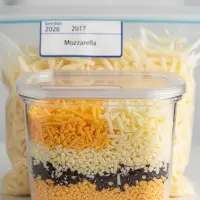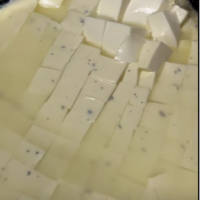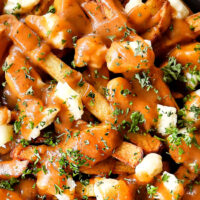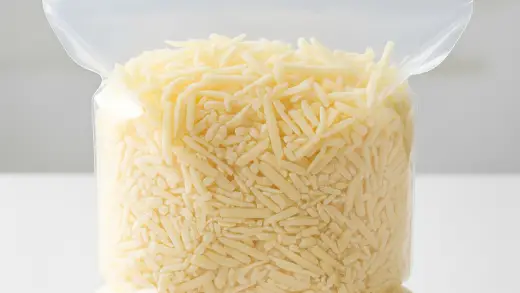Certainly! You can heat burrata. While many enjoy it at room temperature to savor its creamy texture and fresh taste, warming it is also an option.
You might consider roasting burrata with ingredients like tomatoes, or you could add it to your pizzas and pasta dishes near the end of their cooking time. Gently warming it in your oven or in a bowl of warm water are also ways you can heat burrata.
Ever heard of a cheese that’s like a delicious surprise party for your taste buds? Meet burrata! Imagine a soft, fresh mozzarella cheese, kind of like a smooth, white ball.
But here’s the fun part: when you cut into it, out flows a super creamy, rich filling! This amazing cheese comes all the way from Italy, where they’re famous for making incredible, handcrafted cheeses.
Burrata is definitely one of those special, fresh cheeses that people get really excited about.
The outside of burrata is that familiar mozzarella, but the inside is a luscious mix of soft mozzarella shreds and fresh cream, called “stracciatella” (strah-chee-ah-TELL-ah).
It’s so fresh, it’s usually best eaten pretty quickly after it’s made. Now, this brings up a big question lots of cheese lovers wonder about: Can you actually heat up burrata? And even if you can, should you? We’re about to dive into that cheesy mystery.
Can You Heat Up Burrata?
So you’re wondering if you can heat up burrata, right? Absolutely, you can! Though, just so you know, a lot of folks love eating it at room temperature because that’s when its amazing fresh, creamy texture and taste really shine.
Now, if you do decide to warm it up, it’s going to change a bit. The outside mozzarella part will get even softer, and that creamy inside? It’ll get super gooey and melty, which can be pretty awesome depending on what you’re going for!
Why you might want to heat burrata?
Burrata is a fresh Italian cheese, known for its solid mozzarella shell enveloping a creamy filling of stracciatella and cream.
Traditionally, it’s served at room temperature to best appreciate its delicate texture and rich flavor. However, there are appealing reasons why one might choose to heat this luxurious cheese.
Enhanced Creaminess
Warming burrata can make its already creamy interior even more molten and oozy, creating a lusciously gooey experience for you.
Different Flavor Profile
Heating can subtly change the cheese’s flavor, making it meld beautifully with other warm ingredients you might be using. The warmth can also bring out a slightly richer, more savory taste for your palate.
Versatility in Dishes
Warm burrata can be a wonderful addition to various cooked dishes you prepare, adding a touch of luxury and comfort. You might think of baked burrata as a decadent appetizer.
The Classic Approach: Serving Burrata at Room Temperature
Many cheese experts and lovers agree that serving room temperature burrata is the way to go, and here’s why you might prefer it:
Why room temperature is often recommended:
Optimal Flavor: When you let burrata sit at room temperature, its delicate, milky, and slightly sweet flavors become much more pronounced. If it’s too cold, you might miss out on those wonderful tastes.
Perfect Texture: The true magic of burrata, which you’ll experience, lies in its contrasting textures: the soft, pliable mozzarella shell and the incredibly creamy, luscious stracciatella and cream interior. At room temperature, the center becomes even more oozy and luxurious, creating that signature melt-in-your-mouth experience for you.
How to bring burrata to room temperature properly?
It’s simple! You just need to take the burrata out of the refrigerator about 30 minutes to an hour before you plan to serve it.
This allows it to gently warm up, unlocking its full flavor and textural potential for your enjoyment. You should avoid leaving it out for excessively long periods, especially in warm environments.
Classic serving suggestions for unheated burrata
Once your burrata has reached room temperature, it’s ready for you to make it shine. Here are some of the best ways for you to eat burrata in its purest form, giving you fantastic fresh burrata ideas:
- Simple Elegance: The most classic way is often the best for you to try first. Place the burrata on a plate and drizzle it generously with high-quality extra virgin olive oil.
Add a sprinkle of flaky sea salt (like Maldon) and some freshly ground black pepper. The simplicity allows the cheese’s natural flavors to be the star for you.
- With Crusty Bread or Crostini: You should serve your simply dressed burrata with slices of crusty bread or toasted crostini. These are perfect for you to scoop up the creamy interior and any flavorful oil.
- Caprese Salad Variation: You can elevate the traditional Caprese salad. Arrange slices of ripe tomatoes and fresh basil leaves around or alongside the burrata. The creamy cheese adds an extra layer of richness for you compared to standard mozzarella.
- On Salads or with Fresh Vegetables: You might nestle a ball of fresh burrata in the center of a vibrant green salad or serve it alongside an array of fresh or lightly grilled vegetables like asparagus, bell peppers, or zucchini.
The creamy cheese beautifully complements the crispness of the vegetables for your meal.
How to Gently Warm Burrata: Methods and Tips
If you’ve decided to try warm burrata, here are a few methods for you to do it gently and effectively:
Method 1: Quick Oven Warming
This method is great when you want the burrata to be a warm, melty centerpiece.
How it works: Briefly heating the burrata in a preheated oven allows it to warm through evenly. You can often do this alongside other ingredients that benefit from roasting, like tomatoes.
Recommended Temperature and Time
You should preheat your oven to a moderate temperature, around 350-375°F (175-190°C). Place the burrata in an oven-safe dish, perhaps nestled among other ingredients.
Bake for just a few minutes – typically 5-10 minutes is enough. You’re looking for it to be warmed through and slightly softened, not completely melted or browned. You’ll want to keep a close eye on it!
Recipe Snippet Idea for You: Warm Burrata with Roasted Cherry Tomatoes and Garlic
Toss cherry tomatoes and whole, peeled garlic cloves with olive oil, salt, pepper, and a sprig of rosemary or thyme in an oven-safe dish.
Roast at 375°F (190°C) for about 15-20 minutes, or until the tomatoes are softened and slightly burst.
Make a space in the center and add the burrata. Return to the oven for another 5-7 minutes, just until the burrata is warmed through and the edges are slightly softened.
Serve immediately with crusty bread. This is a classic baked burrata recipe approach you can try.
Method 2: Adding to Hot Dishes (Post-Cooking)
This is perhaps the most common and easiest way for you to enjoy the comforting warmth of burrata without directly “cooking” it.
How it works: The residual heat from a freshly cooked dish gently warms the burrata when you add it just before serving.
Tearing and adding to freshly cooked pizza
After your pizza comes out of the oven, you can tear pieces of room-temperature burrata and scatter them over the hot surface. The heat from the pizza will gently melt the cheese, creating creamy pockets of deliciousness. This is a fantastic way for you to make burrata pizza.
Stirring into warm pasta dishes
You can add torn pieces of burrata to a hot pasta dish right before serving. Toss gently to distribute; the cheese will become soft and meld with the sauce. This creates incredibly luscious pasta with burrata for you to enjoy.
Recipe Snippet Idea for You: Creamy Burrata Pasta with Pesto
Cook your favorite pasta according to package directions.
While the pasta cooks, warm some good quality pesto in a large bowl (you can add a splash of pasta water to make it saucier).
Drain the pasta and add it to the bowl with the pesto, tossing to coat.
Tear a ball of room-temperature burrata into chunks and dot it over the hot pasta.
Garnish with toasted pine nuts and fresh basil. The heat from the pasta will gently warm the burrata.
Method 3: Warm Water Bath (Less Common, More for Bringing to Temp)
This method isn’t about making the burrata hot, but rather ensuring you effectively lose its refrigerator chill, especially if you’re short on time for bringing it to room temperature naturally.
How it works: Briefly placing the sealed burrata (still in its original packaging or a sealed bag if you’ve opened and re-wrapped it) in a bowl of warm water can help take the chill off more quickly than just leaving it on the counter.
Focus: The emphasis here is on bringing it to a pleasant room temperature for you, not truly “heating” it to be hot. The water should be warm to your touch, like a baby’s bath – not hot. Around 100-105°F (38-40°C) is a good guideline.
You should leave it for about 10-15 minutes. This helps the center become perfectly creamy.
Knowing how to warm burrata opens up even more ways for you to enjoy this incredible cheese.
Pros and Cons: Heating vs. Room Temperature Burrata
To help you decide your preferred way to enjoy this cheese, let’s look at the advantages and disadvantages of each approach:
Room Temperature Pros (Why you might prefer it):
Best appreciation of fresh, milky flavor: Serving burrata at room temperature allows you to truly appreciate its subtle, fresh, and milky flavors without being masked by heat.
Distinct textural contrast: This is the hallmark of burrata – the delightful difference between the slightly firmer mozzarella casing and the ultra-creamy, stringy stracciatella and cream interior. You’ll experience this contrast most apparently at room temperature.
Room Temperature Cons (What you should be aware of):
Can be too cold if served straight from the fridge: If you don’t allow it to come to room temperature properly, the flavors will be muted, and the center won’t be as lusciously oozy for you.
Less integration with hot components: If you add it cold to a hot dish, it might cool your dish down more than desired.
Heated Pros (Why you might prefer it warmed):
Creamier, oozier texture: Gentle warming transforms the interior into an even more molten, flowing river of creaminess, which you might find incredibly satisfying.
Comforting: Warm cheese often evokes a sense of comfort and indulgence, which you might be seeking.
Can meld flavors with other warm ingredients: When you heat it as part of a dish (like with roasted tomatoes or on a pizza), the flavors of the burrata can meld more deeply with the other components, creating a more cohesive taste experience for you.
Heated Cons (What you should be careful about):
Risk of overheating and losing delicate texture: This is the biggest drawback for you to watch out for. If heated too much or too quickly, the mozzarella can become rubbery, and the cream can separate, ruining the cheese’s special qualities.
Flavor profile changes: Heating can alter the delicate fresh flavors. While not necessarily bad, it’s a different experience than room temperature burrata. You might find some of the nuanced milky notes are diminished.
Loss of distinct textural contrast: The clear separation between the casing and the filling becomes less defined as the whole cheese softens, which you may or may not prefer.
Ultimately, there’s no single “right” way. It comes down to your personal preference and the specific dish you’re preparing.
Conclusion
From its classic room temperature presentation, drizzled with olive oil, to the comforting allure of a gently warmed, gooey center melting into a dish, burrata is a cheese of wonderful versatility for you to explore.
We’ve looked at its Italian artisanal roots, the importance of serving it fresh, and the delicious debate of temperature.
Whether you prefer the unadulterated, fresh milky notes and distinct textural play of room temperature burrata, or the enhanced creaminess and melded flavors of a gently warmed preparation, there’s no single “correct” method.
The beauty of burrata lies in its ability to adapt and delight in various forms that you can create.
What’s your favorite way to enjoy burrata? Do you have a go-to recipe or a special pairing you’d like to share? Let us know in the comments below!













